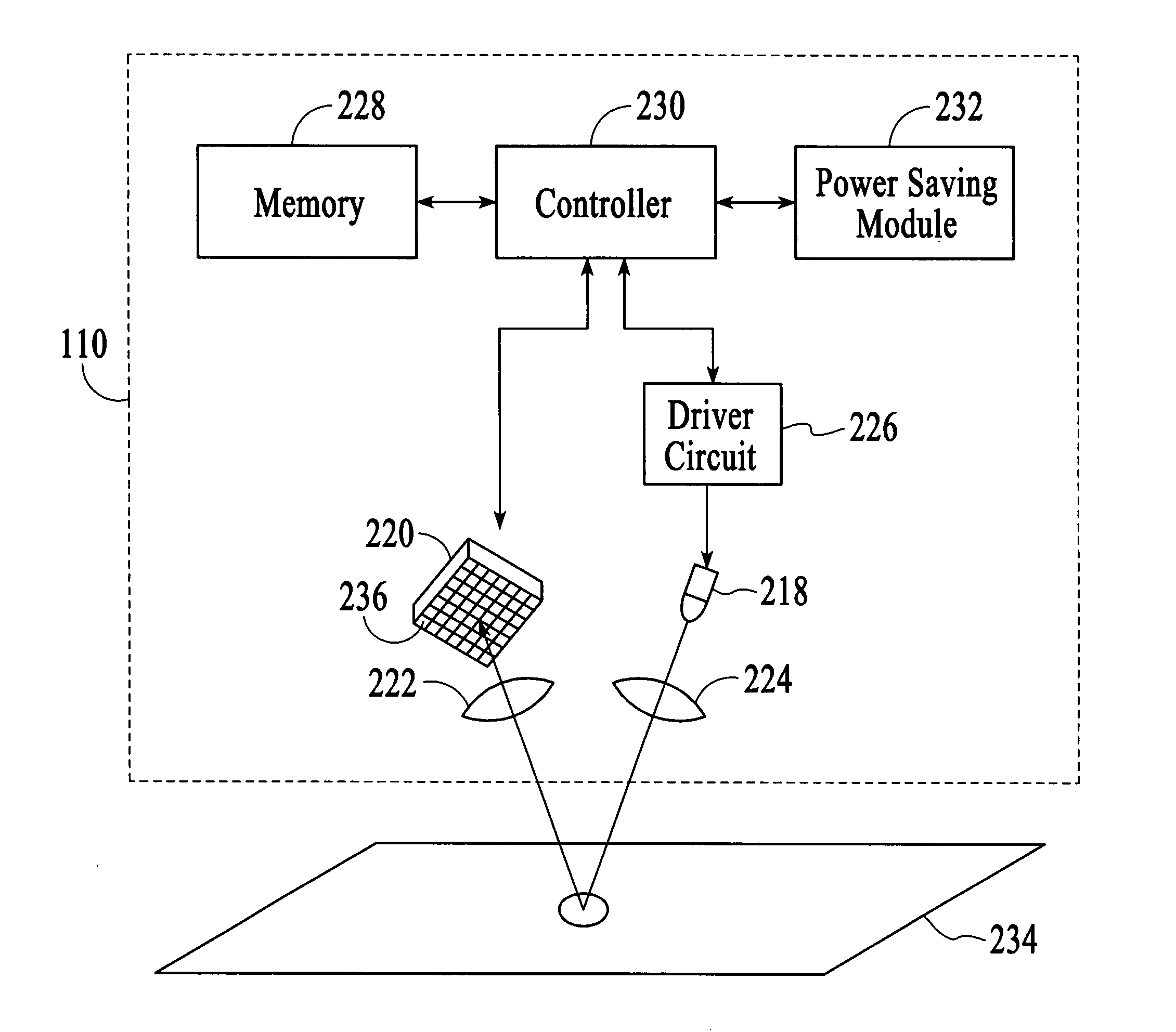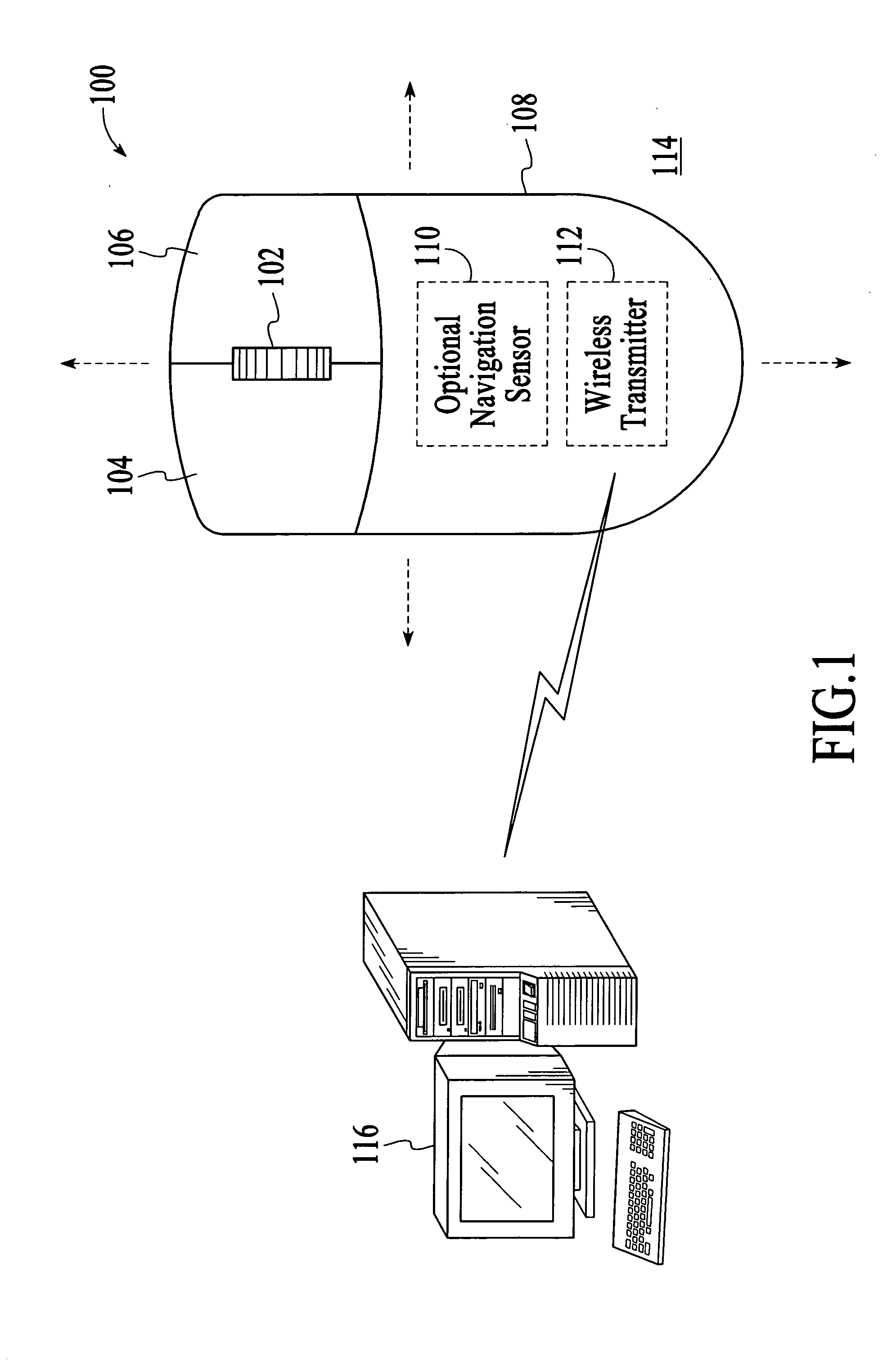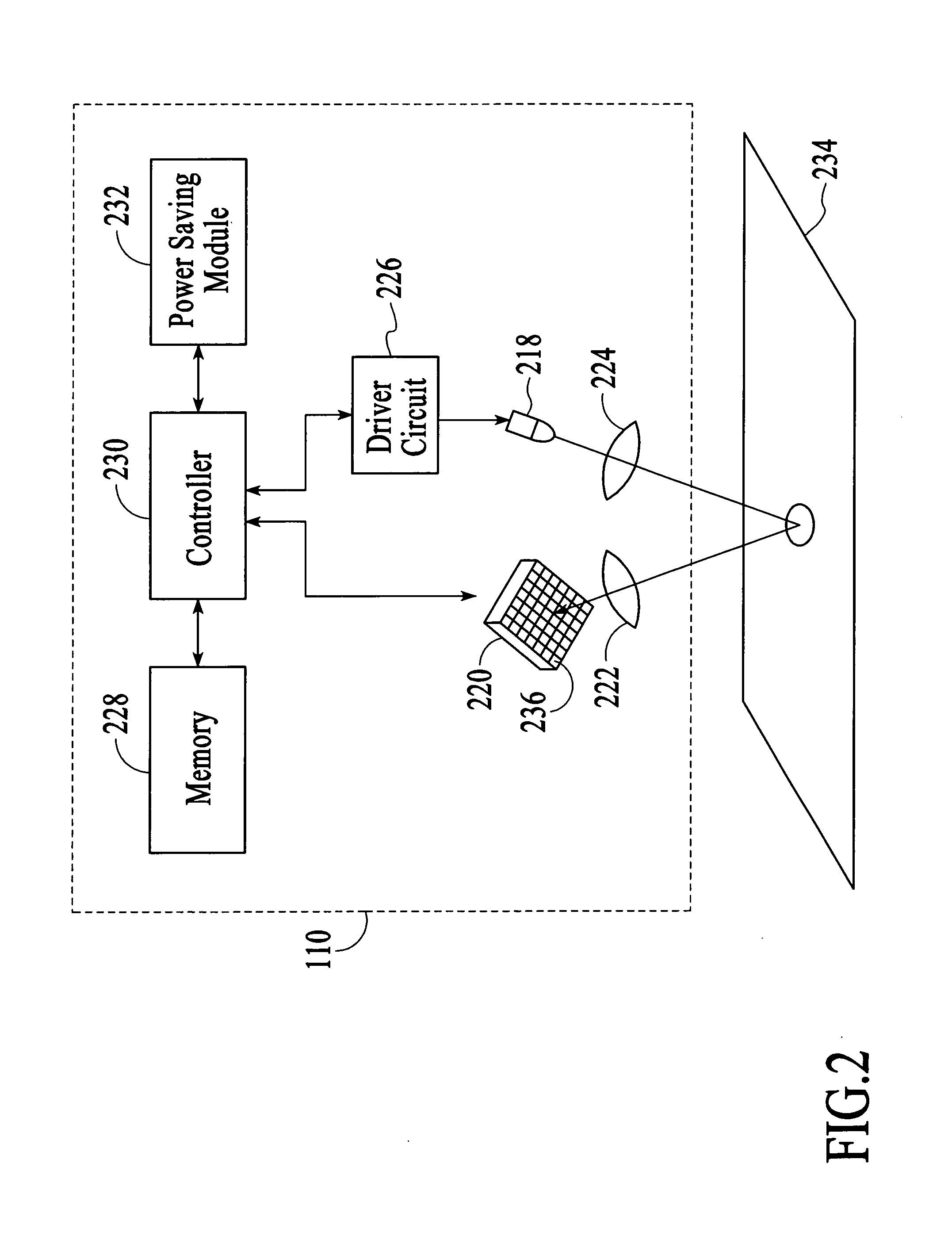Optical navigation system and method for reducing the power consumption of the system
a navigation system and power consumption technology, applied in static indicating devices, photometry using electric radiation detectors, instruments, etc., can solve the problems of significantly compromising the tracking performance no power saving is achieved when the optical mouse, etc., to reduce the power consumption of the optical navigation system and reduce the system power consumption
- Summary
- Abstract
- Description
- Claims
- Application Information
AI Technical Summary
Benefits of technology
Problems solved by technology
Method used
Image
Examples
Embodiment Construction
[0015] With reference to FIG. 1, a cordless optical computer mouse 100 in accordance with an embodiment of the invention is described. As shown in FIG. 1, the optical mouse 100 includes a wheel 102, buttons 104 and 106, and a housing 108 onto which the wheel and the buttons are attached. The optical mouse 100 also includes an optical navigation system 110 and a wireless transmitter 112. The optical mouse 100 is a wireless input device that tracks movements of the mouse relative to a target surface 114 on which the mouse is manually manipulated. The optical navigation system 110 operates to successively capture image frames of the target surface 114, which are compared to estimate the relative movements between the optical mouse 100 and the target surface 114. The estimated relative movements are output as tracking information, which includes two dimensional displacement data, i.e., Δx and Δy data. The tracking information is then transmitted to an associated computer 116 via the wir...
PUM
 Login to View More
Login to View More Abstract
Description
Claims
Application Information
 Login to View More
Login to View More - R&D
- Intellectual Property
- Life Sciences
- Materials
- Tech Scout
- Unparalleled Data Quality
- Higher Quality Content
- 60% Fewer Hallucinations
Browse by: Latest US Patents, China's latest patents, Technical Efficacy Thesaurus, Application Domain, Technology Topic, Popular Technical Reports.
© 2025 PatSnap. All rights reserved.Legal|Privacy policy|Modern Slavery Act Transparency Statement|Sitemap|About US| Contact US: help@patsnap.com



